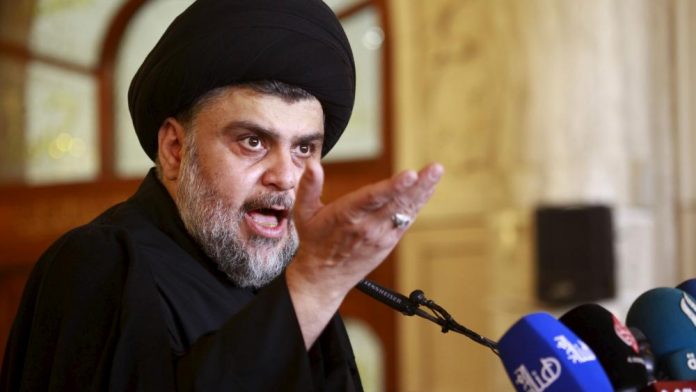From Sectarian Militia Leader to Populist Crusader in a Surprise Electoral Victory
In April 2004, as American troops in Iraq were fighting multiple insurgencies, U.S. officials announced a warrant for the arrest of Muqtada al-Sadr, a young, brash Shiite cleric who had bedeviled the Americans and their Iraqi allies. Paul Bremer, the top U.S. official in Baghdad at the time, declared Sadr an “outlaw.” President George W. Bush labeled him an enemy of the United States.
The warrant, which had been issued by an Iraqi judge months earlier, charged Sadr with instigating the April 2003 murder of a rival cleric, who was hacked to death in Najaf, Shiite Islam’s holiest city. Sadr went underground, as his supporters fought U.S. troops for months in southern Iraq and in Shiite districts of Baghdad. For years afterward, Sadr inspired fear in the United States as a ruthless warlord-cleric. In 2006, a Newsweek cover branded him “The Most Dangerous Man in Iraq.”
On May 12, when Iraqis voted in the country’s latest parliamentary elections 15 years after the U.S. invasion, a new image of Sadr emerged: a smiling cleric with a snowy beard, holding up his ink-stained index finger after casting his ballot in Najaf. In his left hand, he held a plastic Iraqi flag.
The contrast of these two images underscores the remarkable way Sadr has been able to reinvent himself over the past decade—from a sectarian militia leader who oversaw the killings of thousands of Iraqis to a populist, nationalist anti-corruption crusader. Sadr’s political alliance—a mixture of Shiite Islamists, the Iraqi Communist Party, secular civil society activists, and Sunni business leaders—unexpectedly won the parliamentary elections, securing the largest share, 54 seats, in Iraq’s 329-seat Parliament. Sadr is still far short of the 165-seat majority needed to appoint a prime minister and form a government.






























